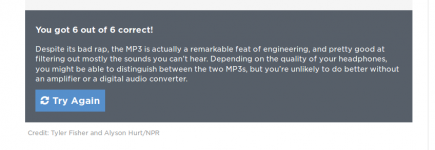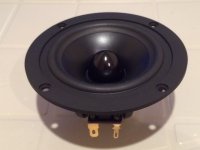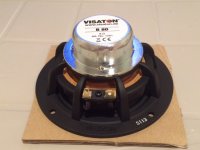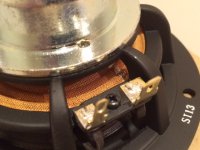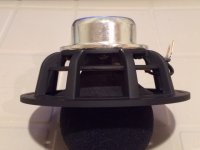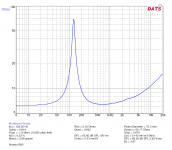@Xaborus
This one is better according to me. Heard them both at a Visaton dealer when picking up other drivers recently. It has stronger motor and flatter response.
FRS 8 M - 8 Ohm
Peter
It has a big peak at 10k - lots of ringing in the impulse response. Not a bad driver from the specs - although I have yet to test a Visaton in my series of blind listening tests.
Yes, there is a peak. It didn't bother me at the time but listening was very brief.
Is it right to assume that the peak is the cause of the wide directivity characteristics mayhaps??
Peter
Is it right to assume that the peak is the cause of the wide directivity characteristics mayhaps??
Peter
I would be interested to see how member Jay (aka Golden Ears Jay) does on this test. 🙂
Unfortunately my laptop cannot play anything from the site. No reaction on clicking. I guess I need an updated Flash pluggin.
I think it is better to use real speaker than headphone for this kind of test. And listen for the sound stage or signal "discontinuity".
The song is preferably a complex one, or listen to a selected complex passage within the song.
It will be difficult, tho, if the MP3 is encoded using variable bitrate. It means, when the passage is complex it uses high bitrate, and when the passage is simple it uses low bitrate.
HF contents is also very critical for those who is affected by them. HF contents can "modify" the tone of a sound. If the MP3 is encoded by removing the HF above 16kHz, it is easy to hear, especially with tweeter that can go flat to 30kHz or 40kHz, preferably without impedance correction zobel.
Maybe "inferior" systems would experience difficulties reproducing the increased complexity of uncompressed music (and here I have to assume that a loss of certain parts of the audio spectrum of a piece of music equates to lower complexity), and one actually "picks up" the system constraints more than the actual differences between files. Consider, for instance, a piece of music which was deliberately composed to lower fidelity (Die Todliche Doris ...); how would one pick out differences then?
Attachments
Behold, the elusive Visaton B80!
I finally have in my hands, after many many months of attempts to acquire, the venerable Visaton B80. I think this is the most expensive 3.5in driver of all the ones tested in the Blind Comparison threads at circa $160USD. This unit was graciously provided by a fellow member who acquired it in Austria and shipped it to me himself. From appearance alone, it is understated, yet is indeed a driver to lust after.
The cast aluminum frame is perhaps the best I have ever seen on a 3.5in driver with a low-air-resistance design that resembles something from a large 2kW pro audio subwoofer. The spider is suspended delicately and super ventilated. The basket legs are curved and thin. The Nd magnet is small to stay out of the way. The wire leads are tinsel WOVEN into the fabric of the spider - first time I have seen this done. There is a solid metal phase plug. The cone appears to be coated paper. Very nicely finished and build quality is exceptional.
Here are photos...
Front:
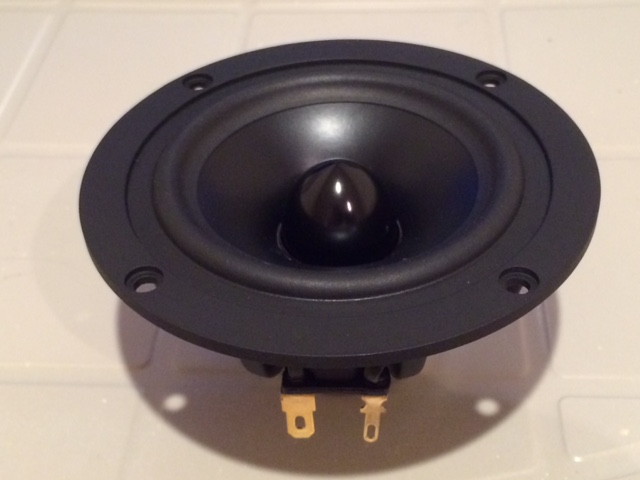
back (how many drivers do you know that are CE certified? That costs a lot to do...):
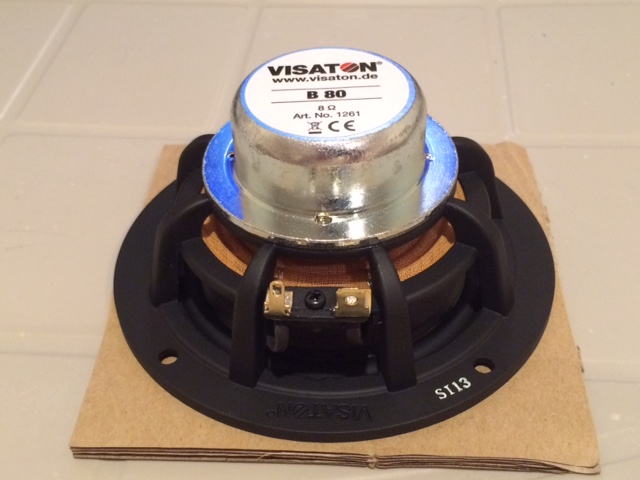
Detail of spider with woven leads:
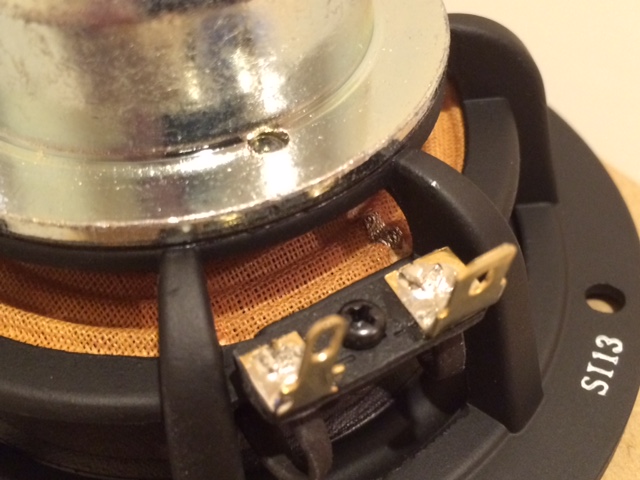
Detail of thin basket legs and exceptionally well ventilated areas behind cone and spider:
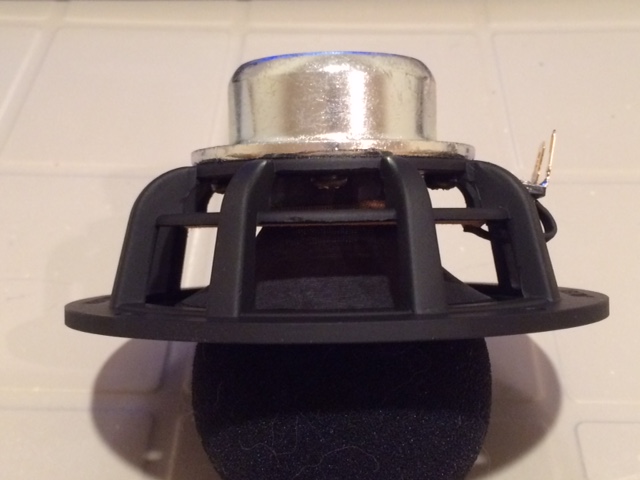
Here are measured TS parameters, Qts and fs are higher than factory spec:
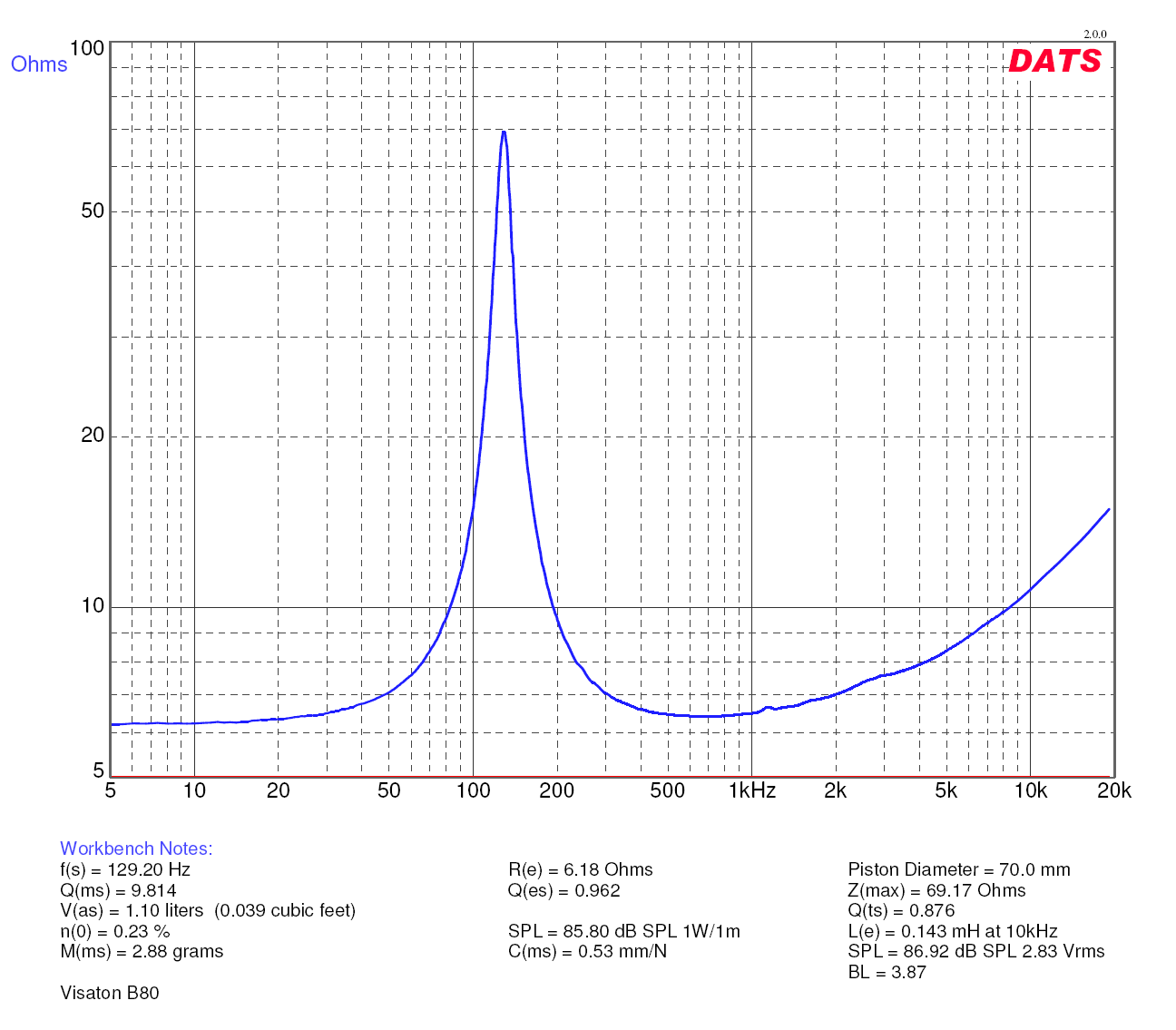
I finally have in my hands, after many many months of attempts to acquire, the venerable Visaton B80. I think this is the most expensive 3.5in driver of all the ones tested in the Blind Comparison threads at circa $160USD. This unit was graciously provided by a fellow member who acquired it in Austria and shipped it to me himself. From appearance alone, it is understated, yet is indeed a driver to lust after.
The cast aluminum frame is perhaps the best I have ever seen on a 3.5in driver with a low-air-resistance design that resembles something from a large 2kW pro audio subwoofer. The spider is suspended delicately and super ventilated. The basket legs are curved and thin. The Nd magnet is small to stay out of the way. The wire leads are tinsel WOVEN into the fabric of the spider - first time I have seen this done. There is a solid metal phase plug. The cone appears to be coated paper. Very nicely finished and build quality is exceptional.
Here are photos...
Front:

back (how many drivers do you know that are CE certified? That costs a lot to do...):

Detail of spider with woven leads:

Detail of thin basket legs and exceptionally well ventilated areas behind cone and spider:

Here are measured TS parameters, Qts and fs are higher than factory spec:

Attachments
Last edited:
For a B80 pair imported including shipping from Europe to USA that $160 seems reasonable if you don't have to pay salestax in your state. Ex tax price pair at local Elfa (Swedish Mouser/Digikey), free shipping Belgium Netherlands Luxembourg, is $112.
If you wanted to get B80 in Netherlands, you may try this:For a B80 pair imported including shipping from Europe to USA that $160 seems reasonable if you don't have to pay salestax in your state. Ex tax price pair at local Elfa (Swedish Mouser/Digikey), free shipping Belgium Netherlands Luxembourg, is $112.
Visaton B 80 8 Ohm - RumoH - Caps, coils and speakers
I didn't check with Rudy, I wasn't buying them 🙂 Rudy is very helpfull, so might even sell and ship to USA.
$160 each in U.S. The difficulty alone in obtaining these in the U.S. is difficult enough regardless of the price. I am truly grateful to Peter Brorsson for kindly providing this driver for a new Round 3 comparison and thread.
Last edited:
Which drivers are going to be included in that round?
Good to know we can actually get some drivers a little cheaper in Europe 🙂.
Good to know we can actually get some drivers a little cheaper in Europe 🙂.
Wow, very cool looking drivers. Can't wait to 'hear' them .
That's not cheap. For these to be practical for US DIY'ers, it's going to take PE or someone to decide they are worth importing. Then again, pretty much any fancy full range had to be specially imported when I first got into this hobby.
That's not cheap. For these to be practical for US DIY'ers, it's going to take PE or someone to decide they are worth importing. Then again, pretty much any fancy full range had to be specially imported when I first got into this hobby.
I can't wait to hear it either - I will probably stick it in the same Dagger that's in the 10F/RS225 Ref Monitor (hopefully cutout is same as 10F). Round 3 will be like finals in that top 2 from first 2 rounds will be pitted against B80 and new A7P and maybe one more wild card.
Yes, the A7P's have been here for a few weeks - just haven't had time to play with them yet due to the other transient perfect 3-way project (http://www.diyaudio.com/forums/multi-way/88135-filler-driver-ala-b-o-3.html#post4378443) that I have been working on. The Round 3 Comparo Thread project is up next up and I will probably be doing round 3 as a final blow-out round with some new players tossed in for fun.
I am thinking of the following lineup (based on results of rounds 1 and 2):
1. TC9FD (or TG9FD)
2. 3FE22
3. 10F/8424
4. P830986
5. B80
6. A7P
7. SB65WBAC25-4
Some differences:
Bass will be provided by sealed RS225-8 with Linkwitz transform and LR2 (woofer)-BW1(full range) XO at about 350Hz and maybe get a transient perfect response.
Music clips will be changed to something totally new. Still deciding on songs...
Debating on making new Dagger cabinet instead of Nautaloss sealed spiral aperiodic TL for the full range drivers.
Will switch to a new amp (surprise here) I have been working on...
Switch to a newer optical SPDIF DAC from CD player's standard DAC for improved upstream source quality.
Hopefully these things will really improve the sound quality of the test.
I am thinking of the following lineup (based on results of rounds 1 and 2):
1. TC9FD (or TG9FD)
2. 3FE22
3. 10F/8424
4. P830986
5. B80
6. A7P
7. SB65WBAC25-4
Some differences:
Bass will be provided by sealed RS225-8 with Linkwitz transform and LR2 (woofer)-BW1(full range) XO at about 350Hz and maybe get a transient perfect response.
Music clips will be changed to something totally new. Still deciding on songs...
Debating on making new Dagger cabinet instead of Nautaloss sealed spiral aperiodic TL for the full range drivers.
Will switch to a new amp (surprise here) I have been working on...
Switch to a newer optical SPDIF DAC from CD player's standard DAC for improved upstream source quality.
Hopefully these things will really improve the sound quality of the test.
Last edited:
Sounds good xrk - take your time. Too many drivers, too little time. 🙂
Only one comment, can you possibly fit in the A7.3? The idea is to get a paper vs metal feeler.
Only one comment, can you possibly fit in the A7.3? The idea is to get a paper vs metal feeler.
Sounds good xrk - take your time. Too many drivers, too little time. 🙂
Only one comment, can you possibly fit in the A7.3? The idea is to get a paper vs metal feeler.
Oh sure, why not... 🙂
A = P830986
B = W4-1320SB
C = FF105WK
D = TG9FD
E = 10F/8424
F = AHE
G = A7.3
H = PA130-8
Frequency Response in FAST:
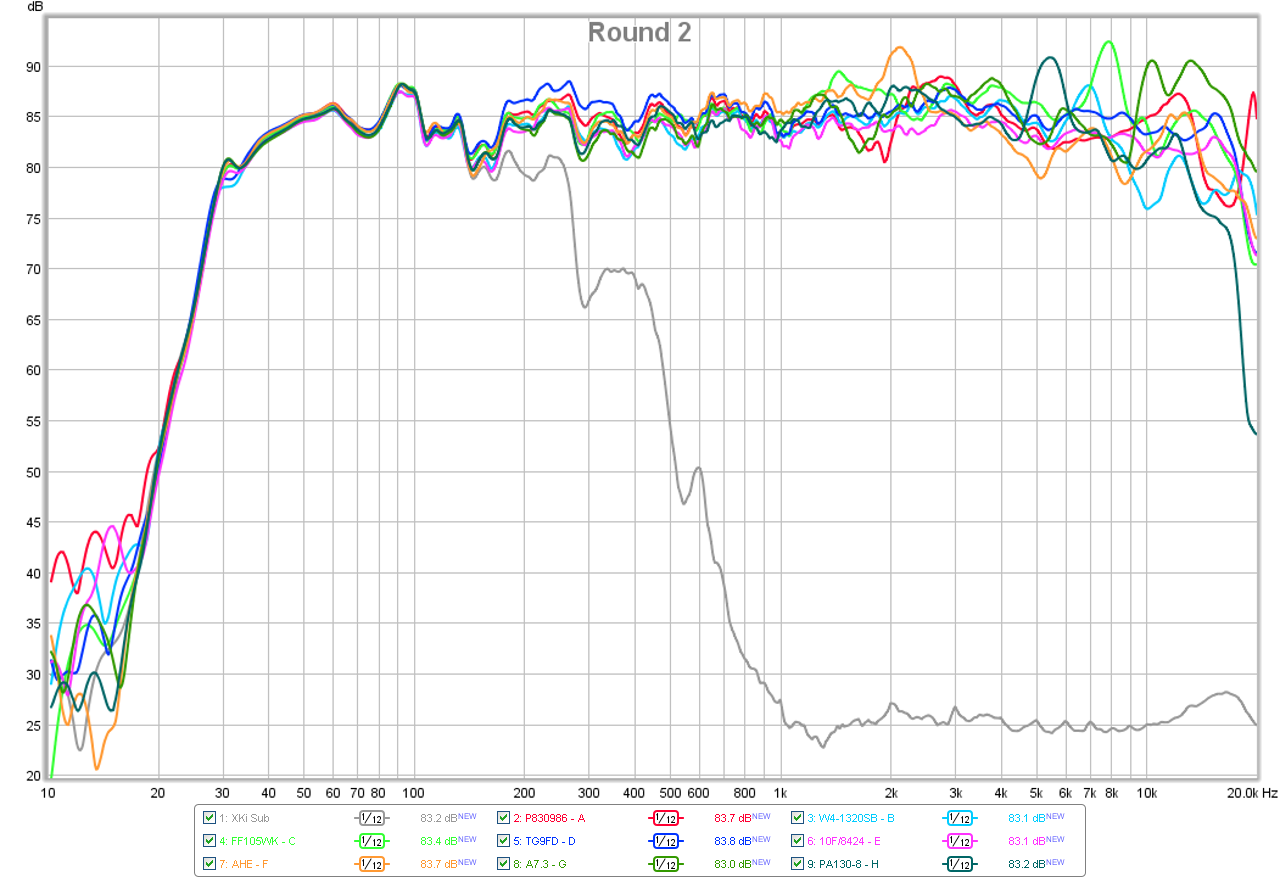
Frequency Response with 4ms gate at 1/48th oct avg and 10dB shift for clarity:
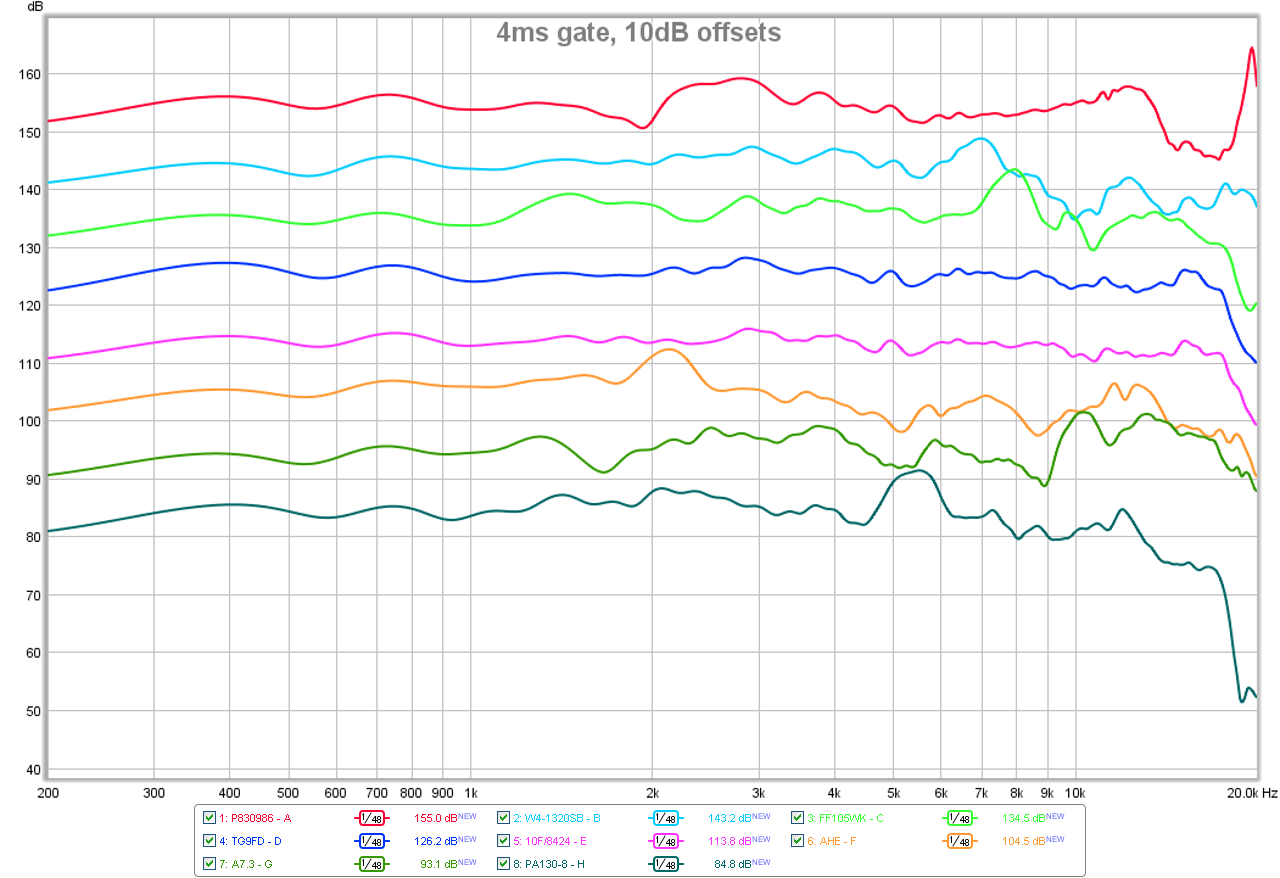
And Impulse Response for all:
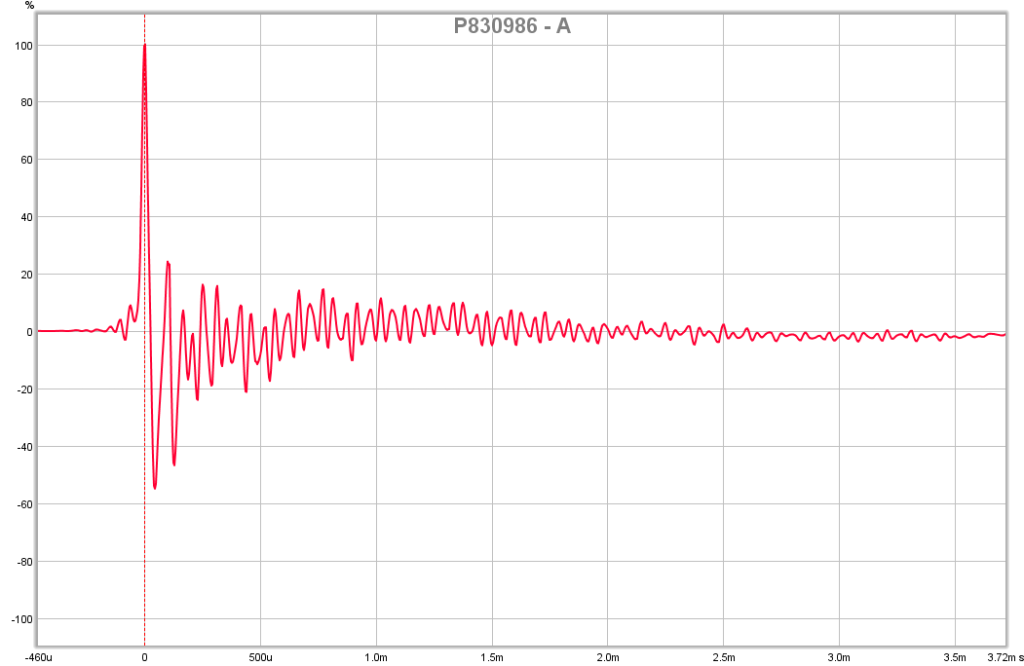
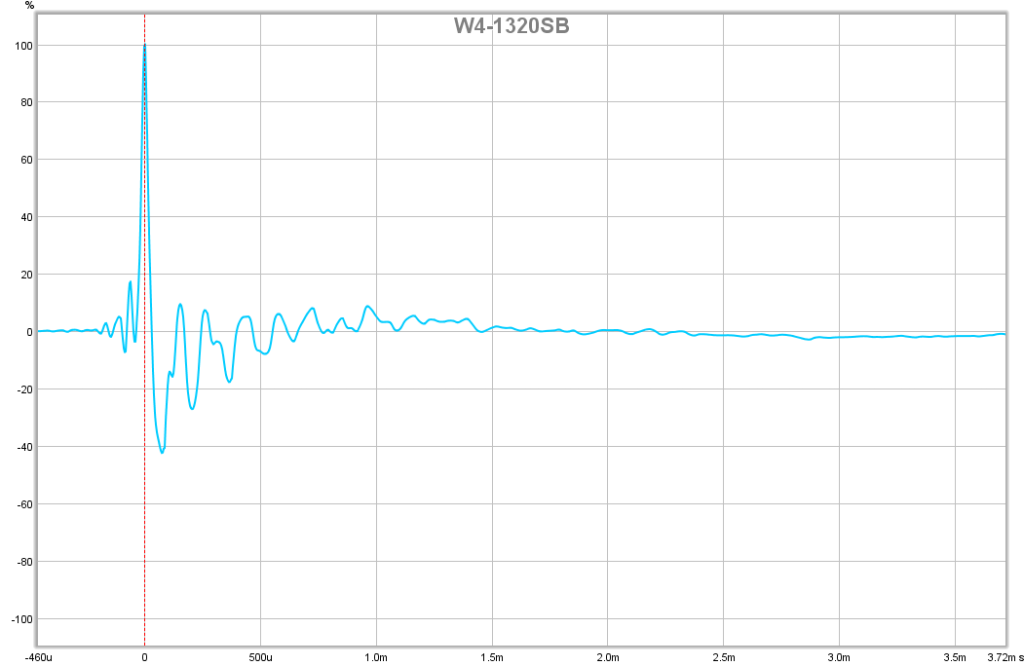
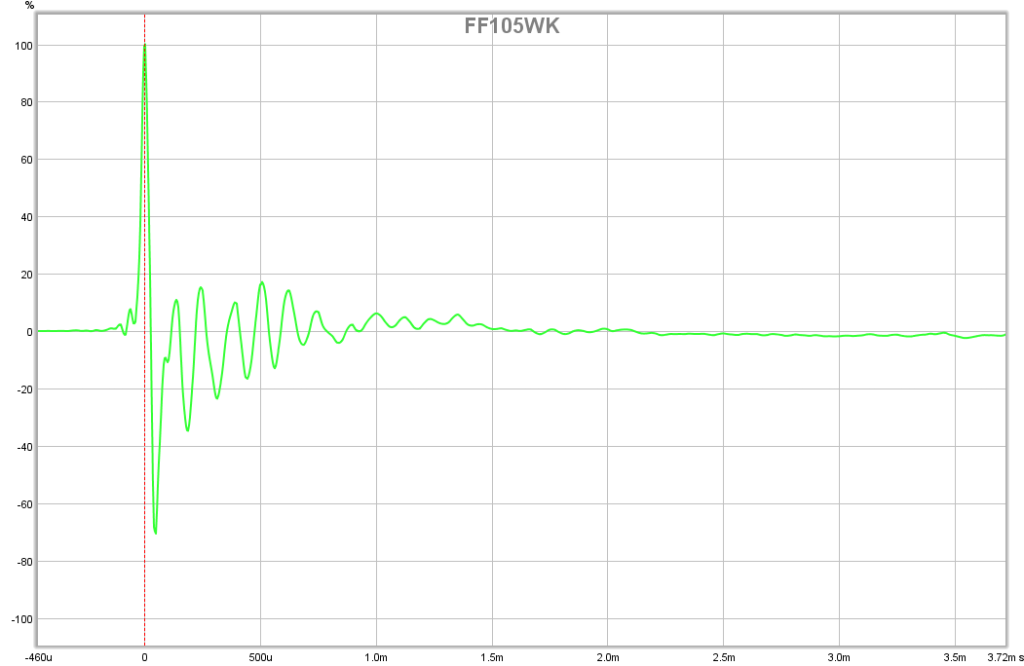
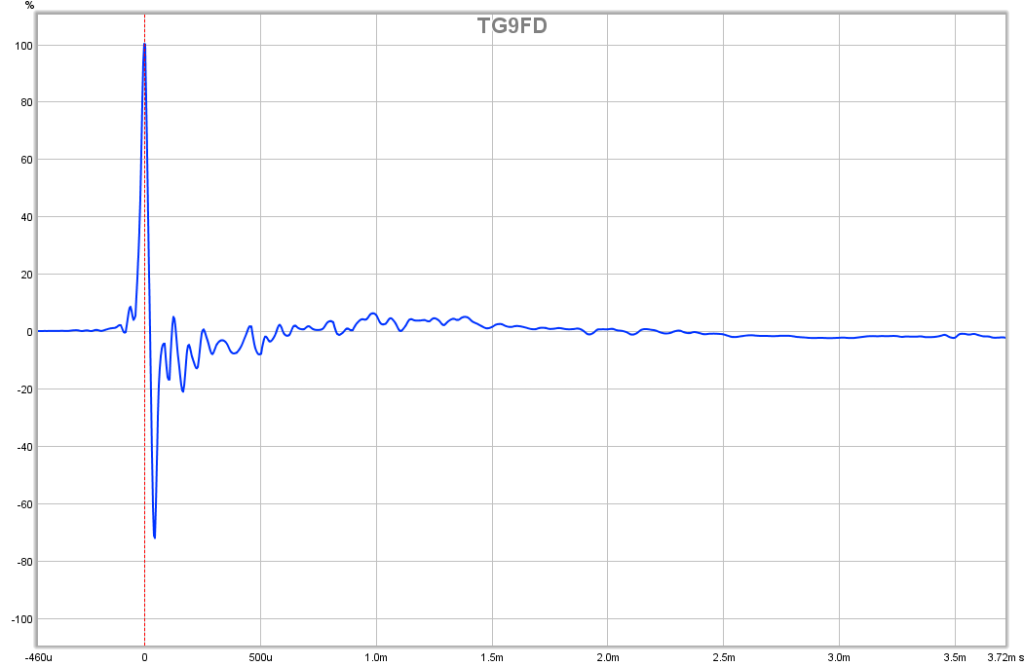
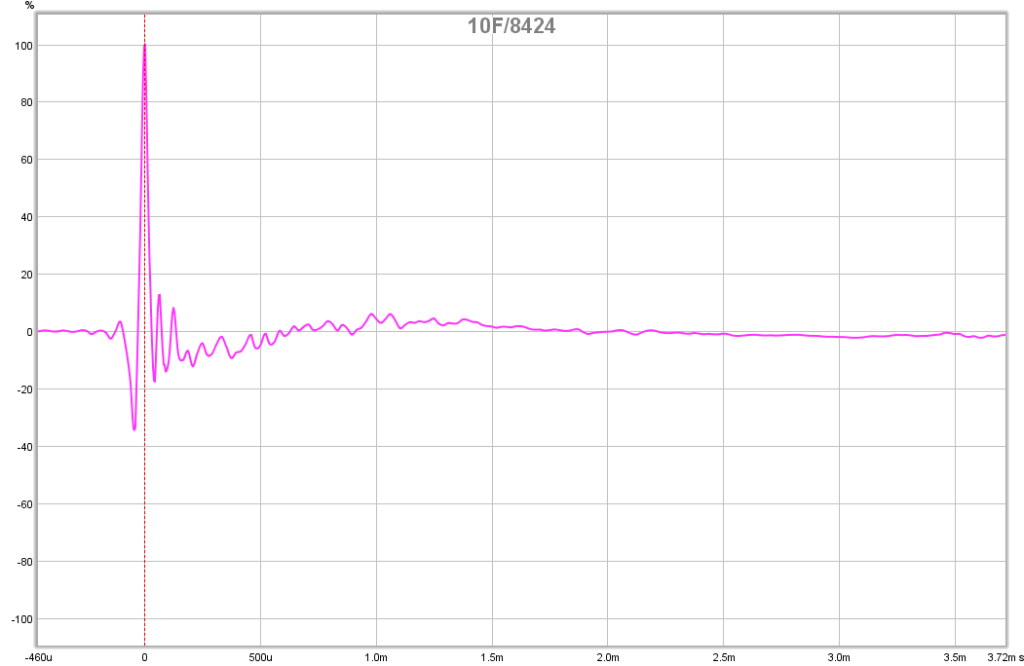

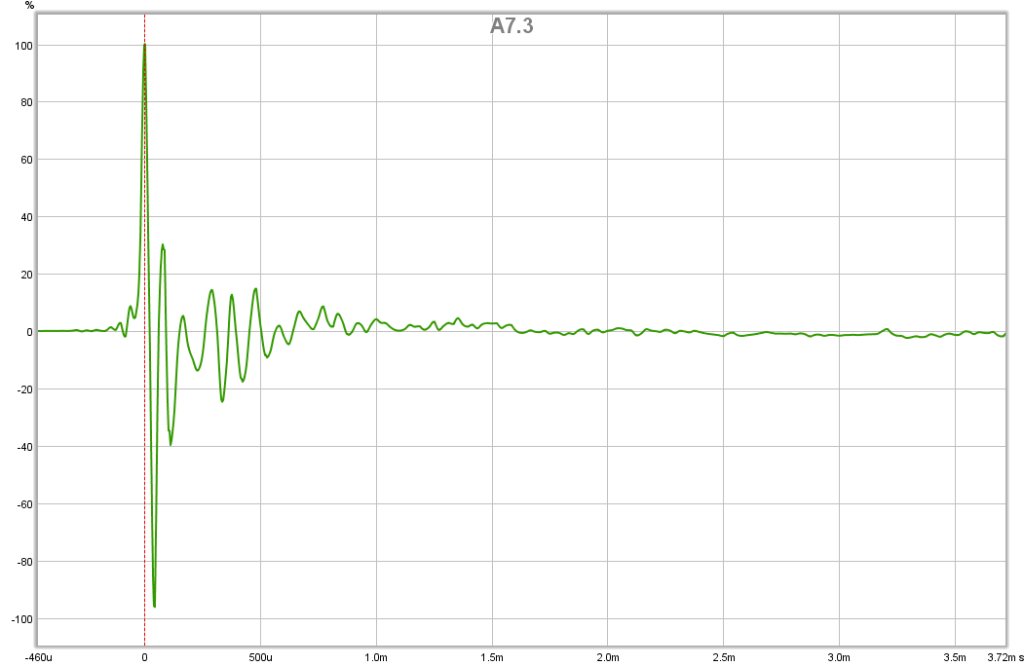
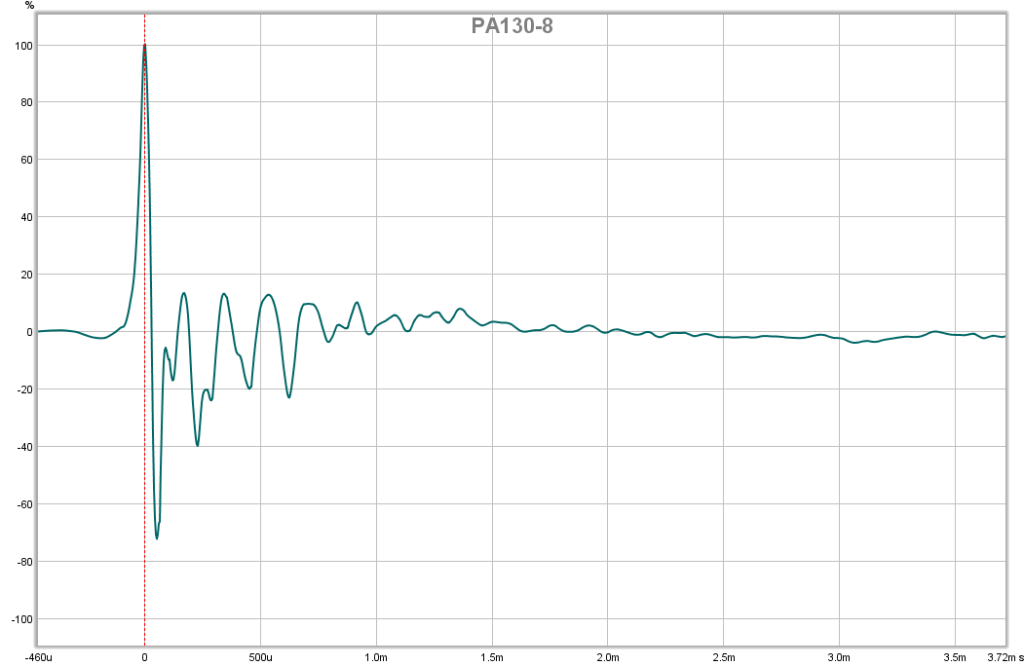
I like the work you did xrk971, it's really interesting (and can't wait to see/hear about the 3.5'' Visaton)
I have one question though: You add 2 transducers in the whole equation (original music's mic + tested speakers + test mic + our speakers/headphones) isnt too much ? Don't you think it can greatly impact the overall perception ?
I have one question though: You add 2 transducers in the whole equation (original music's mic + tested speakers + test mic + our speakers/headphones) isnt too much ? Don't you think it can greatly impact the overall perception ?
The bass driver is setup as a FAST (low XO point) to remove the bass duties from the drivers being tested. Otherwise, bass is very dependent on optimal cabinet for each driver's T/S params. Nonetheless, although there is the long chain of things in the signal path, the only difference in all cases is the driver as all else is identical. So if only one thing is changed, the differences you hear must have come from that one thing. In this case, the driver's voice or signature without any EQ. Only level matching is used.
- Home
- Loudspeakers
- Full Range
- A Subjective Blind Comparison of 3in to 5in drivers - Round 2
